Lesson summary
Students will explore how renewable energy can be locally owned, and benefit people and the planet. As nominated members of the town council of Energyville, they will work in groups to choose the best energy source for this new town and develop a fact-checking guide to assist the mayor in making a reliable and informed decision.
Learning intentions:
Students will...
- evaluate electricity sources for reliability, safety and suitability
- identify and differentiate between fact, misinformation and disinformation.
Success criteria:
Students can...
- identify the pros and cons of electricity sources using trusted information
- create and apply a guide to fact-check scientific statements.
Lesson guides and printables
Curriculum links
Select your curriculum from the options below.
Lesson details
Skills
This lesson is designed to build students’ competencies in the following skills:
- critical thinking
- creative thinking
- collaboration
- communication
- community engagement
- initiative
- problem-solving
Curriculum Mapping
Australian Curriculum (v9.0) content description:
Year 5, Science
Students learn to:
- investigate how scientific knowledge is used by individuals and communities to identify problems, consider responses and make decisions (AC9S5H02).
Year 6, Science
Students learn to:
- investigate how individuals and communities use scientific knowledge to identify problems, consider responses and make decisions (AC9S6H02).
Relevant parts of Year 5 Science achievement standards: Students identify examples where scientific knowledge informs the actions of individuals and communities.
Relevant parts of Year 6 Science achievement standards: Students describe how individuals and communities use scientific knowledge.
NSW Syllabus outcomes:
A student:
- uses evidence to explain how scientific knowledge can be used to develop sustainable practices (ST3-SCI-01).
General capabilities: Critical and Creative Thinking, Digital Literacy, Literacy, Personal and Social Capability, Ethical Understanding
Cross-curriculum priority: Sustainability
Level of teacher scaffolding: Medium - this lesson requires the teacher to scaffold class discussion and activities for understanding.
UN Sustainable Development Goals
- Target 4.7: By 2030, ensure that all learners acquire the knowledge and skills needed to promote sustainable development, including, among others, through education for sustainable development and sustainable lifestyles, human rights, gender equality, promotion of a culture of peace and non-violence, global citizenship and appreciation of cultural diversity and of culture’s contribution to sustainable development.
Resources Required
- Guide to fact-checking scientific statements activity sheet
- Device capable of displaying audiovisual material
- Letters to the mayor activity sheet
- Pens
- Student devices
- Student Worksheet
Additional Info
Cool.org thanks our philanthropic funder, Boundless Earth for their generous contributions and collaboration in creating these resources.
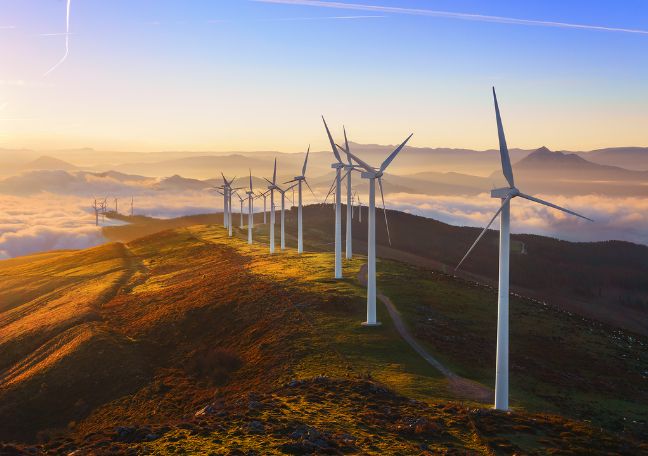
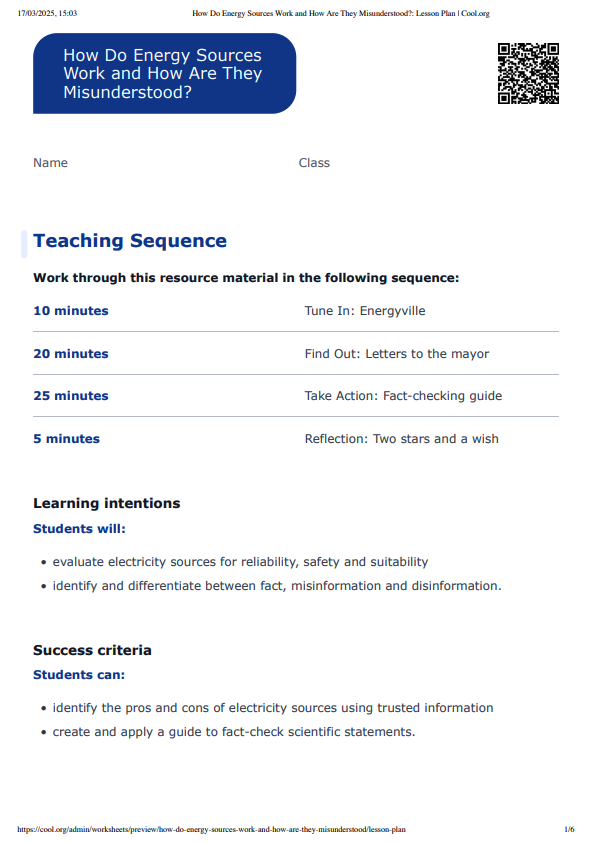
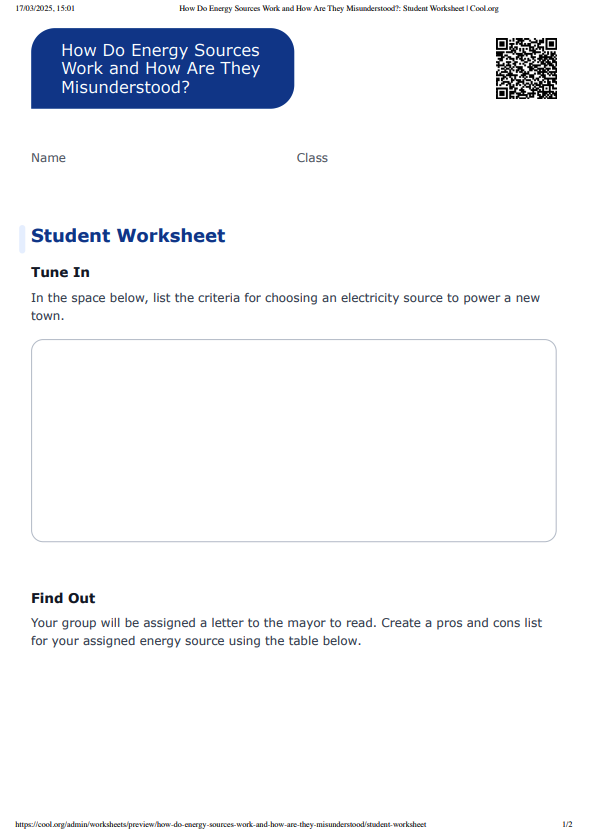
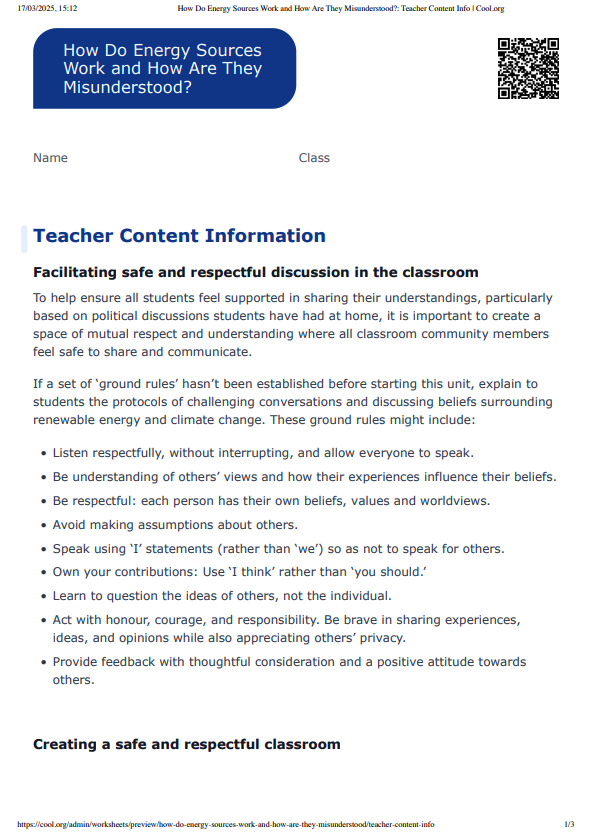
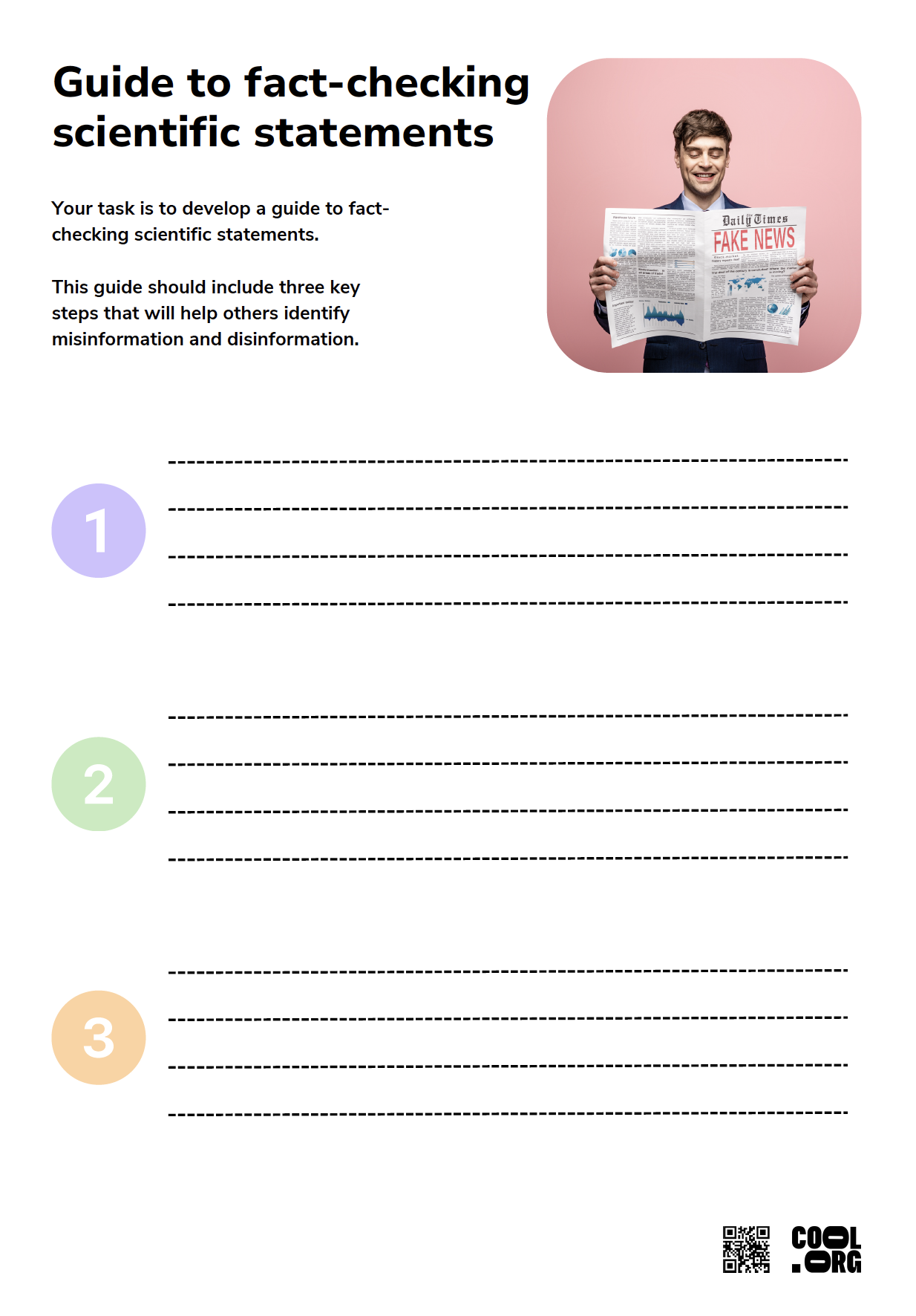
Welcome back!
Don't have an account yet?
Log in with:
Create your free Cool.org account.
Many of our resources are free, with an option to upgrade to Cool+ for premium content.
Already have an account?
Sign up with:
By signing up you accept Cool.org's Terms and Conditions(Opens in new tab) and Privacy Policy(Opens in new tab).